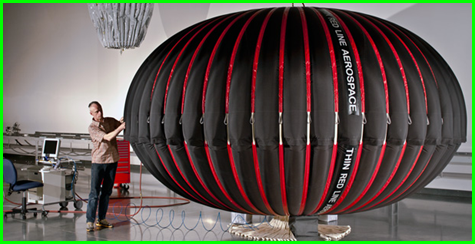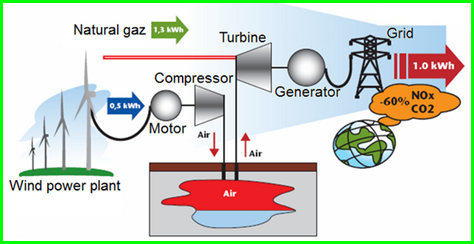.
The World Is Searching For Better Ways To Store Energy
The ability to store energy economically is a key component to the green energy revolution taking place today.
Without storage the best solution for peak and low green energy output periods is still fossil fuels.
One ancient solution used in Greece to run clocks and fire canons was compressed air.
Compressed air, already used to power carnival rides, jackhammers and medical equipment, joins the crowded field of innovations chasing what may be a $21.5 billion market in 2024. Contenders include Elon Musk, chairman of Tesla Motors Inc., who this month unveiled a suite of batteries to store electricity for homes, businesses and utilities.
While Tesla plans to begin delivering its rechargeable lithium-ion model in late summer, compressed air storage systems, or CAES, may have an edge. The technology can be used to store large amounts of power for weeks at less than the cost of batteries.
“You need bulk storage to support all the renewables and CAES is pretty much the only technology to do that,” said Jim Heid, vice president at Dresser-Rand Group Inc., a supplier of compressed air products. “It’s a worldwide phenomenon because of all the intermittent renewables coming online.”
The mechanics are simple. Start with electricity from wind turbines and solar panels to run compressors that fill man-made caverns also used for natural gas storage. When the pressurized air is released, it drives turbines that provide clean power when the sun doesn’t shine and the wind doesn’t blow.
In less than a decade, annual investment in compressed air will be almost $5 billion, according to Navigant Research. That will support more than 11 gigawatts of installed capacity and help renewable power developers match demand with supply.
Competition is stiff. Along with batteries, developers are using everything from vats of molten salt to rooftop tanks filled with ice to store energy, a market Navigant sees expanding about 35-fold by 2024 from $605.8 million this year.
Improvements Needed
Even supporters acknowledge that air storage needs to improve. The systems currently return only about 60 percent of the power used to fill caverns, according to Dresser-Rand.
“When you put in one unit of energy, you want to get one unit out,” said Sam Shelton, senior fellow at the Strategic Energy Institute at the Georgia Institute of Technology. “Air is not very dense so compression storage is low efficiency. It’s all economics.”
Read more about compressed air and other options in the original article.
Feature image source other image source
.




